Introduction
The DJI Avata emerges as a standout in the 2024 lineup of mini drones, marking a significant leap in indoor flight technology. With its compact design and advanced flying capabilities, the DJI Avata is tailored for enthusiasts seeking unparalleled indoor flying experiences. Its unique selling proposition (USP) lies in its combination of safety features, immersive FPV (First Person View) capabilities, and agility in flight, making it a top choice for drone pilots of all levels.
Key Specifications
Weight: 249 grams
Dimensions: Compact size for agile indoor navigation
Flight Time: Up to 20 minutes on a single charge
Camera Quality: 4K video at 60fps, 12MP photos
Range: Enhanced transmission system for stable connectivity
Special Features: Obstacle detection and avoidance, FPV goggles compatibility, and robust flight modes for beginners and experts.
Design and Build Quality
The DJI Avata boasts a sleek, aerodynamic design optimized for indoor environments. Constructed from durable materials, it withstands bumps and minor crashes, a common occurrence during indoor flights. Its design accolades include innovative propeller guards that double as a structural frame, ensuring safety and durability. Visuals of its design will highlight the thoughtful integration of form and function.
Performance Analysis
The DJI Avata excels in real-world conditions with its stable hover, responsive controls, and agile movements. Its optimized battery life ensures extended flight times, while its compact size does not compromise speed and range. Including autonomous flying modes, like follow-me and orbit, enhances its usability across various indoor scenarios.
DJI Avata Battery and Flight Time Specifications:
- Battery Type: The DJI Avata is equipped with an Intelligent Flight Battery, specifically designed to optimize performance and provide real-time battery status via DJI’s app.
- Flight Time: On a single charge, the DJI Avata can achieve a maximum flight time of approximately 18 to 20 minutes, depending on conditions such as wind and usage patterns.
- Charging Time: The battery is designed for quick recharging, though the exact time can vary based on the charging setup.
Accessories and Compatibility
A range of accessories enhances the DJI Avata’s functionality, including additional batteries for extended flight sessions, carrying cases for easy transport, propeller guards for added safety, and compatibility with third-party FPV goggles for an immersive flight experience.
Pros of DJI Avata:
Cons of DJI Avata:
- The drone offers exceptional video recording capabilities, providing extraordinary footage compared to standard drones.
- It’s particularly suited for FPV beginners due to its ease of learning and safety features like duct guards, which allow for safer flights near people and objects.
- The Avata is robust and impact-resistant, enhancing its durability during flights.
- Users can enjoy a unique and immersive FPV experience with DJI Goggles 2, benefiting from high-quality image transmission, low latency, and visually stunning experiences.
- It features convenient flight modes (Normal, Sport, and Manual) and the ability to perform limited acro freestyle flying.
- The drone has return-to-home and emergency stop features for added safety and convenience.
- Compared to custom FPV drones, the Avata has superior battery life, offering extended flight times.
- Its price point is higher than starting with custom FPV drones, which might be a significant consideration for those new to FPV flying.
- The risk of crashing an expensive drone like the Avata can be a deterrent, especially since repairs and part replacements are more limited compared to custom FPV drones.
- The drone’s Cinewhoop design limits its acro freestyle capabilities due to the risk of tumbling from a poor center of gravity.
- Despite having a Normal Mode, it cannot match the flying features of standard drones like the DJI Mini 3 Pro, making it less suitable for traditional drone footage.
- The absence of avoidance sensors and active tracking or follow-me modes reduces its versatility for certain types of footage or flying close to obstacles.
- The Avata is not designed for long-range flights and may not perform as well in terms of speed and acceleration compared to other FPV drones.
RELATED ARTICLE: Best Mini Drones with Cameras 2024: The Ultimate Buyer’s Guide
FAQ
1. What is the flight time of the DJI Avata? The DJI Avata can achieve a maximum flight time of approximately 18 to 20 minutes on a single charge, depending on flight conditions and usage patterns.
2. Can the DJI Avata be flown indoors? Yes, the DJI Avata is designed with indoor flying in mind. Its compact size, protective duct guards, and FPV capabilities make it suitable for navigating tight spaces and flying close to objects with reduced risk.
3. Does the DJI Avata have obstacle avoidance sensors? No, the DJI Avata does not come equipped with obstacle avoidance sensors. Pilots need to be cautious when flying close to objects or in environments with potential obstructions.
4. What makes the DJI Avata suitable for beginners? The DJI Avata is considered beginner-friendly due to its ease of learning, safety features like duct guards, and the ability to fly in Normal, Sport, and Manual Modes. These features help new pilots to gradually build their flying skills in a controlled manner.
5. How does the DJI Avata perform in terms of video quality? The DJI Avata boasts a 1/1.7-inch CMOS camera capable of recording 4K videos at 30/50/60fps and 1080p slow-motion video at up to 240fps, offering high-resolution, vivid colors, and incredible detail in footage.
6. What are the charging time and battery specifications for the DJI Avata? The DJI Avata’s battery has a capacity of 2420 mAh and a voltage of 14.76 V, with a charging time of approximately 48 minutes to full charge. It’s recommended to handle the battery with care and charge it before each flight.
7. Can I perform acrobatic flights with the DJI Avata? While the DJI Avata allows for limited acro freestyle flying, it is primarily designed as a Cinewhoop drone with an emphasis on safety and stability. Its design and center of gravity limit extensive acrobatic maneuvers.
8. Is the DJI Avata easy to maintain and update? Yes, the DJI Avata is designed for easy maintenance and updates. Charging the batteries, updating the drone’s firmware, and general maintenance are straightforward, making it accessible for pilots of all experience levels.


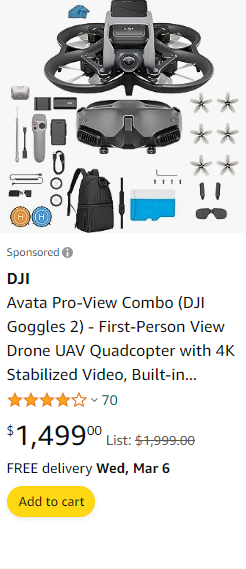
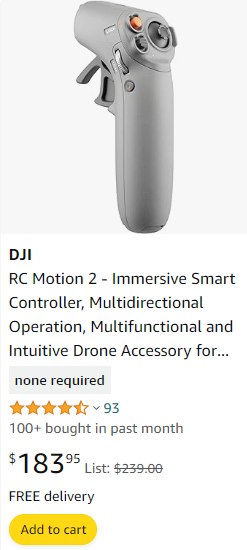
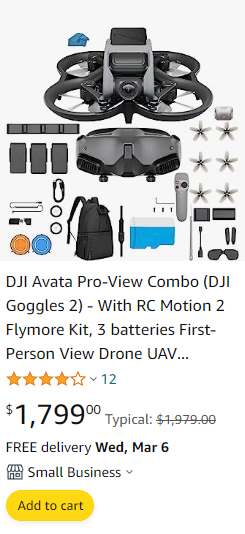
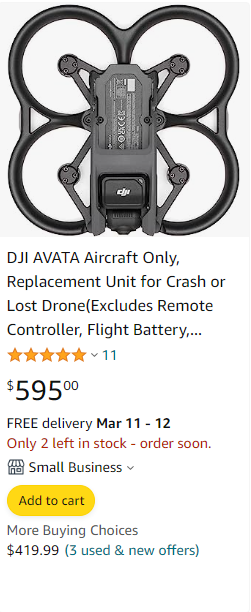
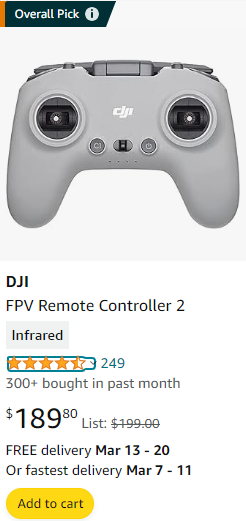
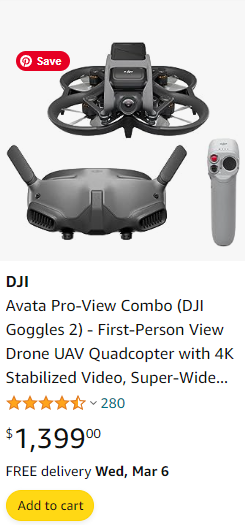

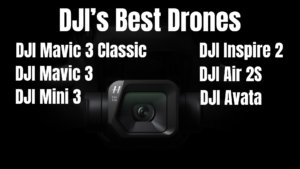

Pingback: DJI's 6 Best Mini Drones Of 2024
Pingback: DJI Air 2S Review: Unleashing the Power of Aerial Photography
Pingback: DJI Inspire 2 Review: The Future of Aerial Cinematography
Pingback: DJI Avata 2: The Next Gen Cinewhoop Drone